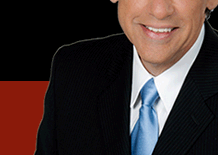|
Do
Your Set-Up!
August 20th, 2001
In past installments, we described the use of the acronym
"BATS" to prepare you for on-camera, on-microphone performances.
To review: "B" is for breathing - is should be diaphragmatic
and deep.
"A" is for audience - it's not important what YOU feel, it's
important what the audience perceives about your performance.
"T" is for 'three part rule': settle, comfortable, lower -
or more precisely, SETTLE your voice down to a COMFORTABLE
LOWER range - not a fake or weird voice, just your own, naturally
lower range.
In this installment, we're going to discuss the "S" in that
acronym.
The "S" stands for 'set-up', the psychological, emotional,
and physical preparation for your performance. A good news
report requires first and foremost a good journalist to get
the facts and figures correct. It may also require a good
editor, to determine how long or short the piece will be,
the spin of the piece, and the direction the piece will take.
It may in addition require a technician/producer to physically
put the elements together in a fashion that will make sense
to an audience. Needless to say, often we as reporters have
to wear all these hats, which simply increases the pressure
on our performance.
There is a fourth element, however, that is crucial to understanding
how your story is perceived by its audience. In addition to
acting as the journalist, the editor, and the producer, the
reporter also has to be a performer.
In fact no matter how solid and compelling the journalism,
editing and production on your piece, if the performance is
weak, all that fine work can be wasted.
Essentially, your performance is the conduit through which
all this other work - the journalism, editing, and production
- must pass on its way to your audience. If your performance
is bad, no amount of good journalism, editing or production
will reach your audience.
This is simply a way of saying that you need to take as much
care and pay as much attention to your performance (read:
voice!) as you do to your journalism, editing, and production.
In short, you need to put some serious preparation into your
performance in the same way you do into your writing, editing
and production values. The set up can be simply described,
but will need a more detailed description in future installments.
Here it is:
1. Stand with your feet roughly a head's width apart (no wisecracks
about how big my head is!).
2. Working smoothly up your body, be sure your feet are relaxed,
your knees are not locked (nor flexed too much for that matter),
your pelvis is tipped under, your stomach is relaxed, your
shoulders are relaxed, your head and chin floating on the
horizon, not fixed in place, and that you are holding no tension
or tightness (my students often memorize the mantra that goes:
'Feet, kees, pelvis, stomach, shoulders, head and chin floating
on the horizon, no tension or tightness...)
3. Exhale every last molecule of air out of your body.
4. Inhale and exhale (always diaphragmatically!)
5. Inhale to prepare. When you are comfortably full of air,
pause...
6. Begin speaking. We'll go into more detail on the importance
of this set-up in future installments, but on your own, just
try doing this routine every time you do a stand up, track
in a booth, read copy from a teleprompter, or even rehearse.
Take the few seconds required to move through your body, releasing
tensions, and focusing your mind on the job ahead. In the
meantime, just breathe deeply.
|

















